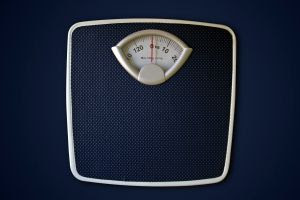Author: Ander Lilla
Diet, diet, diet, we have all heard those words before. But what does it mean to you exactly? Maybe it’s something that has not been employed into your life or maybe it’s something that you wish you could throw out of your life. Diets are part of many people’s lives but what we should consider is that they can sometimes be misleading when we are trying to lose weight and be healthy. Let’s take a deeper look as to what I mean by this.
For example, a friend recently pointed something out to me after I was boasting about this diet I had tried. I was going on and on about how this diet had worked for me and it was the best I had ever felt and so on. He immediately pointed out the fact that, well, maybe it wasn’t necessarily “this diet” that allowed me to lose weight. Maybe it was just the fact that in result to starting this diet, I had stopped eating so many sweets and wasn’t eating late at night. That was not necessarily mentioned anywhere in this diet structure; but that fact alone would more than likely help not only myself but several others lose weight as well.
So how can I boast about this diet working for me when it could have just been me making some different decisions about my eating habits? It clearly may not have been the diet working at all. Yes the diet could have helped me eat healthier, but who’s to say that I wouldn’t have lost that weight anyway by the couple of changes that I made on my own account and not by following this diet plan.
So what makes a diet a diet? There are so many diets out there right now including the Atkins diet, the Mediterranean diet, the HCG diet, and so on. Can we just come up with any sort of eating habit and coin it by saying; I lost weight, it’s sure to work for you. What I am suggesting is that you could make a couple of changes to your current eating habits and if it works for you, then call it the insert your name here Diet.
So the next time you go boasting about how this diet worked for you and want all these people to try it, take a real look at the situation. Maybe it wasn’t even the diet itself that helped you lose weight and feel great, maybe it was just you.
Article Source: http://www.articlealley.com/article_1484525_23.html
For example, a friend recently pointed something out to me after I was boasting about this diet I had tried. I was going on and on about how this diet had worked for me and it was the best I had ever felt and so on. He immediately pointed out the fact that, well, maybe it wasn’t necessarily “this diet” that allowed me to lose weight. Maybe it was just the fact that in result to starting this diet, I had stopped eating so many sweets and wasn’t eating late at night. That was not necessarily mentioned anywhere in this diet structure; but that fact alone would more than likely help not only myself but several others lose weight as well.
So how can I boast about this diet working for me when it could have just been me making some different decisions about my eating habits? It clearly may not have been the diet working at all. Yes the diet could have helped me eat healthier, but who’s to say that I wouldn’t have lost that weight anyway by the couple of changes that I made on my own account and not by following this diet plan.
So what makes a diet a diet? There are so many diets out there right now including the Atkins diet, the Mediterranean diet, the HCG diet, and so on. Can we just come up with any sort of eating habit and coin it by saying; I lost weight, it’s sure to work for you. What I am suggesting is that you could make a couple of changes to your current eating habits and if it works for you, then call it the insert your name here Diet.
So the next time you go boasting about how this diet worked for you and want all these people to try it, take a real look at the situation. Maybe it wasn’t even the diet itself that helped you lose weight and feel great, maybe it was just you.
Article Source: http://www.articlealley.com/article_1484525_23.html




